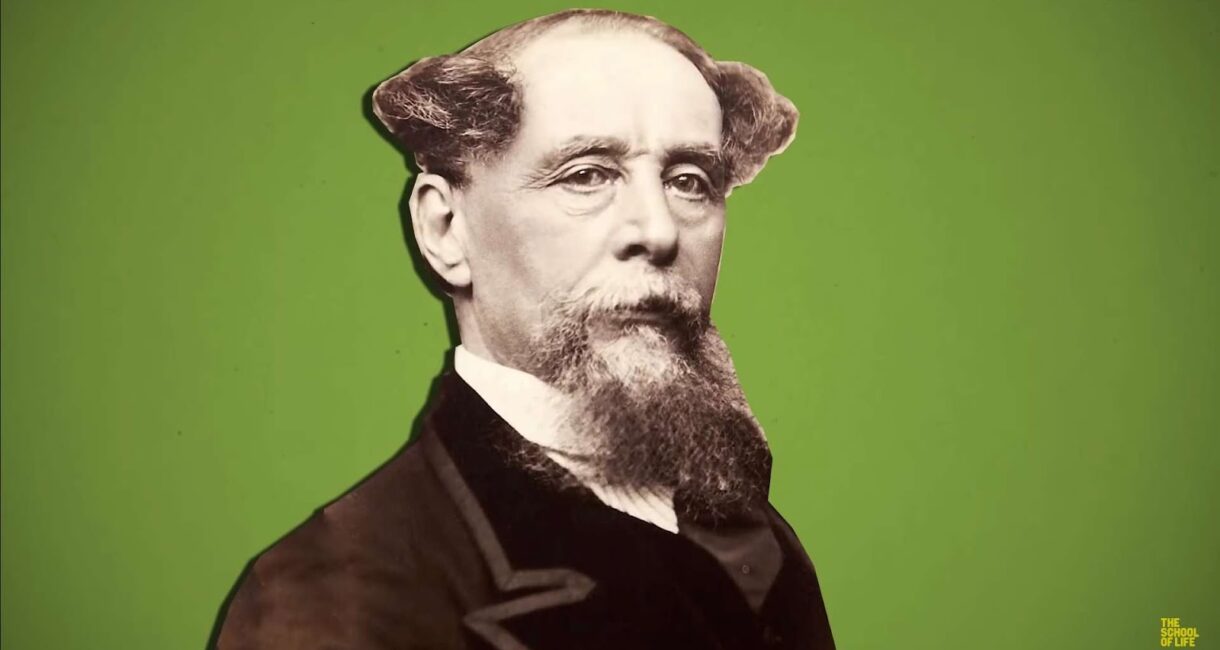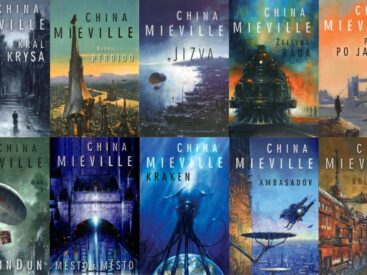Undoubtedly, Charles Dickens stands as an illustrious luminary in the annals of English literature, commanding admiration and acclaim. Through the ages, his literary creations have ensnared the hearts and minds of readers, weaving stories that endure across generations, leaving an indelible mark on a global audience. Yet, the question may arise: what is the extent of Charles Dickens’ literary output? In the following discourse, we shall embark on a journey through the prolific career of this literary virtuoso, illuminating the vast tapestry of his creative endeavors.
Charles Dickens: A Literary Titan
Charles Dickens, an iconic figure of the 19th century, can be rightfully described as a literary titan whose legacy transcends time. His extensive body of work, comprising numerous novels, novellas, and essays, possesses an enduring charm that captivates readers to this day. Dickens’ profound impact on English literature is not only a testament to his prolificacy but also a result of his unique blend of storytelling, vivid descriptions, intricate plots, and unwavering commitment to addressing societal issues. In this exploration of Charles Dickens’ literary genius, we’ll delve into his writing style, storytelling prowess, and the enduring relevance of his works in the modern era.
The Dickensian Writing Style: A Masterclass in Literary Craftsmanship
Charles Dickens was a virtuoso when it came to crafting his distinctive writing style, which remains a source of inspiration for writers worldwide. His narrative technique, characterized by rich, vivid descriptions and finely nuanced characters, is a testament to his unparalleled mastery of the English language. Here’s a closer look at Dickens’ signature writing style:
- Intricate Character Development: Dickens had an extraordinary ability to breathe life into his characters. He meticulously depicted their personalities, quirks, and motivations, making readers feel an intimate connection with each one;
- Vivid Settings: Dickens’ novels are known for transporting readers to the gritty streets of Victorian London or the bucolic countryside with an almost cinematic vividness. His skillful use of descriptive prose allows readers to immerse themselves fully in the world he creates;
- Social Commentary: Beyond mere storytelling, Dickens used his novels to shine a spotlight on the pressing social issues of his time. He employed satire, humor, and pathos to draw attention to problems like poverty, inequality, and the plight of the working class.
The Enduring Legacy: Why Dickens Matters Today
While Charles Dickens’ works are firmly rooted in the 19th century, their relevance in the modern era is strikingly apparent. Here are some key reasons why Dickens’ literary legacy continues to captivate and resonate with readers today:
- Universal Themes: The themes explored in Dickens’ novels, such as the pursuit of justice, the impact of industrialization, and the resilience of the human spirit, remain pertinent in contemporary society;
- Complex Characters: The multidimensional characters in Dickens’ stories mirror the intricacies of human nature. They provide valuable insights into the complexities of human behavior, making his works a timeless source of psychological exploration;
- Timeless Lessons: Dickens’ moral lessons, often conveyed through the transformation of his characters, offer enduring guidance on issues like empathy, compassion, and the consequences of greed and cruelty;
- Literary Craftsmanship: Writers today can still learn much from Dickens’ craftsmanship, from his narrative techniques to his skill in engaging readers on both intellectual and emotional levels.
Charles Dickens’ Literary Legacy: A Comprehensive Look at His 15 Remarkable Novels
Charles Dickens, the prolific 19th-century English novelist, left behind an enduring literary legacy with his series of 15 remarkable novels. Each of these works stands as a masterpiece in its own right, showcasing Dickens’ unparalleled storytelling prowess and his keen observations of Victorian society. In this detailed exploration, we will delve into the rich tapestry of Dickens’ novels, providing insights and recommendations for readers eager to embark on their literary journey through his works.
The Pickwick Papers (1836-1837)
- Dickens’ debut novel, “The Pickwick Papers,” introduced readers to the adventures of the Pickwick Club as they travel through the English countryside;
- A delightful blend of humor, satire, and colorful characters, this novel is an excellent starting point for those new to Dickens.
Oliver Twist (1837-1839)
- “Oliver Twist” tells the gripping tale of a young orphan’s struggles in the harsh world of Victorian London;
- It explores themes of poverty, crime, and the pursuit of a better life, making it a must-read for those interested in social commentary.
Nicholas Nickleby (1838-1839)
- A tale of resilience and perseverance, “Nicholas Nickleby” follows the titular character as he faces adversity and seeks justice;
- Dickens’ vivid characterizations and sharp critique of the educational system make this novel both entertaining and thought-provoking.
The Old Curiosity Shop (1840-1841)
- This novel centers around the plights of Little Nell and her grandfather as they embark on a journey filled with misfortune and hope;
- Dickens’ portrayal of the human spirit’s endurance in the face of adversity is a powerful theme throughout the story.
Barnaby Rudge (1841)
- “Barnaby Rudge” transports readers to the Gordon Riots of 1780, providing a vivid historical backdrop to its compelling narrative;
- It’s a lesser-known gem in Dickens’ oeuvre, offering a unique perspective on a tumultuous period in British history.
Martin Chuzzlewit (1843-1844)
Overview: Charles Dickens’ “Martin Chuzzlewit” is a profound exploration of human nature, dissecting the intricacies of selfishness and the transformative journey towards redemption. The story revolves around the young Martin Chuzzlewit, who embarks on an enlightening journey, uncovering truths about himself and the world around him.
Key Themes & Elements:
- Self-Discovery: The novel portrays Martin’s evolution from a self-absorbed individual to one who understands the value of empathy and kindness;
- Satire on Societal Norms: Dickens uses his sharp wit to critique aspects of both English and American societies, particularly focusing on the follies and vices prevalent during his time;
- Moral Lessons: Integral to the story are the lessons learned about greed, betrayal, and the possibility of moral rebirth.
Why It Stands Out:
Dickens’ masterful character development and his ability to weave humor with social commentary make “Martin Chuzzlewit” not just a narrative, but a mirror to society’s paradoxes.
Dombey and Son (1846-1848)
Overview: “Dombey and Son” delves deep into the turbulent dynamics of family relationships, centering on the strained ties between Mr. Dombey, a business magnate, and his son. This novel is a poignant exploration of human emotions and relationships within the framework of Victorian society.
Key Themes & Elements:
- Father-Son Relationship: At its core, the novel scrutinizes the complex bond between Mr. Dombey and his son, highlighting the effects of emotional neglect and unfulfilled expectations;
- Impact of Pride and Ambition: Dickens critically examines how unchecked pride and ambition can lead to personal downfall and familial strife;
- Character Evolution: The novel is a canvas depicting the transformation of characters influenced by their experiences and interactions.
Why It Stands Out:
“Dombey and Son” is notable for its deep emotional resonance, intricate character portrayals, and its exploration of societal expectations and personal desires.
David Copperfield (1849-1850)
Overview: Often regarded as Charles Dickens’ most personal work, “David Copperfield” is a rich tapestry of life, chronicling the journey from childhood to adulthood. It stands as a testament to Dickens’ storytelling prowess and his ability to create vivid, memorable characters.
Key Themes & Elements:
- Semi-Autobiographical Elements: The novel is imbued with experiences mirroring Dickens’ own life, adding a layer of authenticity to the narrative;
- Character Development: Each character in “David Copperfield” is meticulously crafted, contributing to a story brimming with emotional depth and complexity;
- Life’s Journey: The novel encapsulates the highs and lows of Copperfield’s life, offering insights into the human condition.
Why It Stands Out:
The blend of autobiographical elements with fiction, along with its emotional depth and memorable characters, make “David Copperfield” a cornerstone of literary history.
Bleak House (1852-1853)
Overview: “Bleak House” is an intricate narrative that masterfully interweaves multiple plotlines, centering around the legendary legal case of Jarndyce and Jarndyce. This novel is a scathing critique of the Victorian legal system, showcasing Dickens’ flair for combining social commentary with compelling storytelling.
Key Themes & Elements:
- Critique of the Legal System: Dickens exposes the inefficiencies and corruption within the legal system, highlighting its impact on individuals and society;
- Interconnected Stories: The novel’s multiple plotlines converge to form a complex tapestry, reflecting the interconnectedness of society and its institutions;
- Social Commentary: Through its vivid characters and intricate plot, “Bleak House” paints a detailed picture of Victorian society, addressing issues like poverty, bureaucracy, and social injustice.
Why It Stands Out:
The novel’s critique of the legal system, combined with its complex narrative structure and deep social commentary, makes “Bleak House” a groundbreaking work in the realm of literary fiction.
Hard Times (1854)
- In “Hard Times,” Dickens critiques the dehumanizing effects of industrialization and the pursuit of utilitarianism;
- This novel serves as a powerful reminder of the importance of compassion and empathy in a rapidly changing world.
Little Dorrit (1855-1857)
- “Little Dorrit” paints a vivid picture of debtors’ prisons and the struggles of its characters, particularly the titular Little Dorrit;
- Dickens’ exploration of social injustice and the impact of wealth disparity is as relevant today as it was in Victorian England.
A Tale of Two Cities (1859)
- Set against the backdrop of the French Revolution, “A Tale of Two Cities” is a gripping historical novel that explores themes of resurrection and sacrifice;
- Its famous opening lines remain some of the most recognizable in English literature.
Great Expectations (1860-1861)
- “Great Expectations” follows the journey of Pip, an orphan with aspirations beyond his station, and his complex relationship with the enigmatic Miss Havisham;
- Dickens’ exploration of ambition, identity, and the consequences of one’s choices continues to captivate readers.
Our Mutual Friend (1864-1865)
- “Our Mutual Friend” examines the impact of wealth and inheritance on individuals and society;
- Dickens’ multifaceted characters and intricate plotlines make this novel a rewarding literary experience.
The Mystery of Edwin Drood (unfinished, 1870)
- Although left unfinished due to Dickens’ untimely death, “The Mystery of Edwin Drood” is a tantalizing mystery that has inspired countless speculations;
- Readers can explore Dickens’ last work and imagine their own endings to this intriguing narrative.
Charles Dickens: Beyond Novels – A World of Short Stories and Essays
Charles Dickens, the literary giant of the Victorian era, was not confined to the world of novels alone. His prolific pen ventured into the realm of short stories and essays, weaving a rich tapestry of narratives that graced the pages of various periodicals during his time. While his novels are celebrated worldwide, it is his lesser-known short stories and essays that we’ll explore here, shedding light on the brilliance that expanded beyond the boundaries of his full-length works. Also, discover the secrets of financial success with our curated list of must-read books about making money. Unlock your wealth potential today!
Exploring Dickens’s Short Stories: A Glimpse into His Versatility
Charles Dickens was not just a novelist; he was a master of the short story form. His short stories, often packed with vivid characters and captivating plots, have left an indelible mark on literature. Let’s delve into some of his notable works:
- A Christmas Carol: Dickens’s timeless tale of Ebenezer Scrooge and his transformation on Christmas Eve has become a holiday tradition worldwide. This heartwarming story is a lesson in redemption, generosity, and the power of self-reflection;
- The Signal-Man: A chilling and atmospheric short story, it delves into the psychological and supernatural as it unravels the eerie events surrounding a railway signalman. Dickens’s mastery of suspense shines through in this gripping narrative;
- The Cricket on the Hearth: This lesser-known gem explores themes of family, love, and the holiday spirit. It’s a delightful story that offers a unique perspective on Christmas and the warmth of home;
- The Haunted Man and the Ghost’s Bargain: In this tale, Dickens delves into the consequences of erasing painful memories and emotions. It’s a cautionary story about the human psyche and the importance of embracing one’s past.
Charles Dickens: A Catalyst for Societal Transformation and Empathy
Charles Dickens is renowned not only for his captivating storytelling but also for his profound influence on social reform during the Victorian era. His literary masterpieces were far more than mere sources of entertainment; they served as pivotal instruments for societal critique and change. Here’s an in-depth look at how Dickens’s works transcended the realm of fiction:

1. Unmasking Society’s Flaws through Literature:
- Dickens’s novels and essays offered a powerful critique of the societal issues plaguing Victorian England. His writing illuminated the deep-seated inequalities, injustices, and daily struggles faced by different social classes;
- Through his vividly drawn characters, Dickens brought to life the experiences of the underprivileged and marginalized, fostering a sense of understanding and empathy in his readers;
- Insight: Dickens’s narratives, rich in detail and emotion, made the plights of the poor and disenfranchised impossible to ignore for his contemporary audience.
2. Literature as a Vehicle for Social Advocacy:
- Dickens used his literary prowess to highlight pressing social issues such as the harsh realities of child labor, the dire circumstances of orphans, and the soul-crushing impact of rampant industrialization;
- His novels, notably “Oliver Twist” and “Hard Times,” were more than stories; they were powerful calls to action, awakening the public’s conscience and galvanizing support for social reforms;
- Recommendation: Modern readers can draw inspiration from Dickens’s approach, using their platforms to advocate for change in contemporary issues.
3. Influencing Policy and Fostering Change:
- Dickens’s work had a significant and tangible influence on the policymaking of his time. His writings played a key role in shaping public opinion and informing policy decisions;
- His efforts contributed to substantial reforms, including the revision of child labor laws and the improvement of conditions in workhouses;
- Fact: Dickens’s impact on policy highlights the potential of literature to effect real-world change, a lesson that remains pertinent today.
4. Cultivating a Legacy of Empathy and Compassion:
- Beyond his direct impact on social reform, Dickens’s stories cultivated a culture of empathy, urging readers to understand and address societal issues;
- His narratives, rich with emotional depth and moral complexity, continue to resonate with audiences today, underscoring the timeless nature of his themes;
- Tips for Readers: Engage with Dickens’s works not just as historical artifacts but as mirrors reflecting ongoing social struggles, understanding that empathy is as crucial now as it was in Dickens’s time.
Conclusion
In essence, Charles Dickens proved to be an incredibly prolific writer, penning a total of 15 novels, numerous short stories, and a plethora of insightful essays during his illustrious journey as an author. His literary creations continue to hold a vital position within the realm of English literature, revered for their enduring themes, unforgettable characters, and perceptive societal insights. Whether you find yourself ardently devoted to the world of Dickens or are taking your first steps into his literary realm, his written masterpieces present an abundance of reading material that promises years of exploration and enjoyment ahead.



